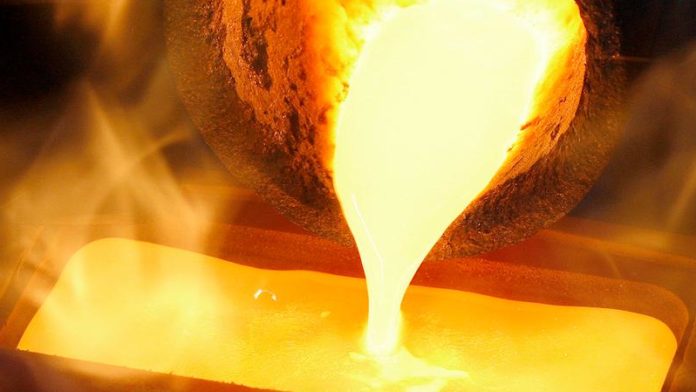
IT’S not often the head strategist at an organisation that promotes gold urges investors to be cautious about the metal. But that’s what John Reade of the World Gold Council (WGC) did. Speaking at the FT Mining Summit on September 26 he warned that getting into gold at the price at the time — about $2,600/oz — might be ill-advised.
“By the time investors realise gold is going up, it’s gone up as much as it’s going to,” said Reade. “Be careful of taking short-term action because if the world doesn’t end, gold will weaken. And if the world does end, we have more important things to think about.”
This seemed to be sage advice because the gold price, at the time, had soared from about $2,000/oz 12 months earlier. The “trouble” is, the metal has continued to head north, with banks now factoring in $2,800/oz (the spot price was at about $2,750 this week) ahead of reaching $3,000 or even $3,100/oz.
That last price is what Morgan Stanley is forecasting and is why it ripped up the rule book on how to analyse the metal. “Recent history shows us that gold can still rise when yields are rising too, but falling yields are almost always associated with rising gold prices,” it said in a complete revision of its methodology.
The US Federal Reserve’s 50 basis point rate cut in September certainly gave fresh impetus to gold, which had already torn through multiple historic highs on the back of central bank purchases, geopolitical distress and a less scrutable wave of new investment buying.
In a report published on October 30, the WGC said global gold exchange traded fund (ETF) inflows of some 95t were the major driver of the metal’s overall 5% year-on-year third quarter growth to 1,313t. This is the first quarter of ETF growth since early 2022 and with the US election only days away, and with more interest rate cuts on the horizon, continued investor appetite is likely to be a feature of this quarter’s gold demand, the council said.
Central bank buying eased in Q3 but is likely to continue to drive demand. Delegates at the annual meeting of the London Bullion Market Association forecast a price of about $2,941/oz for when they meet again, in Japan, in October 2025. If that sounds optimistic, it’s worth bearing in mind that the association can’t help but be an echo chamber as it brings together semi-manufacturers, marketers, analysts and central bankers.
In fact, central banks figured highly in the association’s discussion this year. A panel comprising the central banks of the Czech Republic, Mongolia and Mexico recognised gold’s traditional attributes: it offers diversification, has a return and provides some liquidity. But higher trade flows have resulted in increased foreign exchange reserves against which banks build gold reserves to spread risk.
“Given most central banks mark-to-market gold holdings regularly, the sharp rise in gold prices could mean lower purchase volumes from programmes that target gold as a percentage of total reserves, all else being equal. That being said, the expectation is that the trend for the official sector as a whole is still for higher gold holdings ahead,” UBS said in a recent report.
Third quarter central bank net buying totalled 186t, 49% down year-on-year, according to the WGC. But it’s still the seventh highest for a quarter in 10 years, making 2024 another standout year for the metal.
A version of this article first appeared in the Financial Mail.










